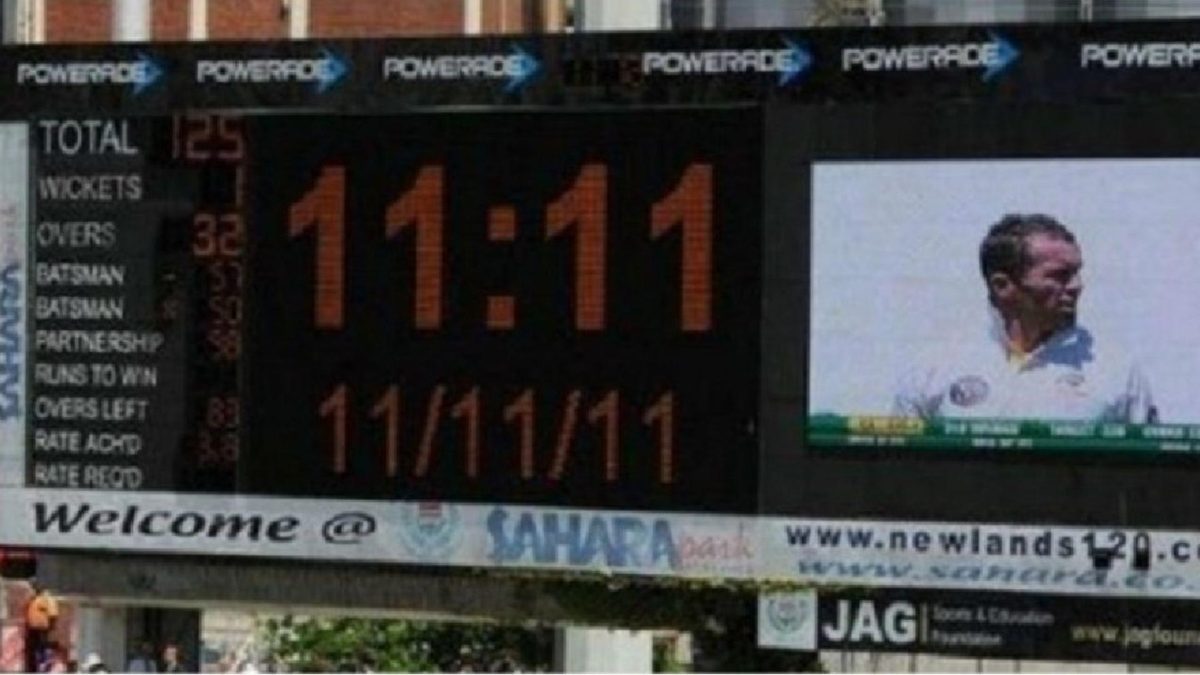
For a sport whose default scorecard features more numerical data than most others, cricket is replete with statistical coincidences.
A graphic did the rounds on social media during the Test series between the West Indies and India, where one of the broadcasters had both Zaheer Khan and Ishant Sharma as commentators.
Zaheer and Ishant both boast of 311 wickets in Test cricket. While Zaheer retired after 2014, Ishant – despite not having officially quit – has fallen off the radar since 2021.
Their tally is the most shared by any pair of bowlers with completed careers (which comes with an asterisk for Ishant) from the same country. Both men also have 11 five-fors and a ten-wicket haul, and on Indian soil, 104 wickets apiece.
Cricket has several coincidences, of which here are a few. It is worth remembering that these are merely trivia based on small sample sizes, and do not necessarily imply anything.
The mother of all coincidences
The cricket coincidence generations knew growing up. In March, 1877, Australia beat England by 45 runs at the Melbourne Cricket Ground in what was later classified as the first ever Test match.
The same teams met for the Centenary Test match in March 1977 at the same venue. Australia won again… by 45 runs.
The second-most known?
This one took root the day Alec Stewart announced retirement. Born on April 8, 1963 – in other words, 8.4.63 – he finished with 8,463 runs in Test cricket.
The identical World Cups
It is one thing for a one-off result to repeat after a hundred years, but to have identical tournament aggregates in cricket’s most-followed global event is on another level.
The 2007 and 2011 Men’s World Cups – consecutive editions, no less – produced exactly the same number of runs: 21,333.
The Tasmanian mine
At fewer a 100,000 people, Launceston is not even the most-populated city in Tasmania. Yet, of the 12 Player of the Match winners in Men’s World Cup finals, it has produced three: David Boon (1987), Ricky Ponting (2003), and James Faulkner (2015).
Double-centurions
A slightly contrived one. The Perth Test match of the 2013/14 Ashes was the 100th of the illustrious careers of both Michael Clarke and Alastair Cook.
Clarke began the Test match with 7,940 runs and made 24 in the first innings. Cook responded with 72. When Clarke pushed Joe Root through mid-wicket to pick up the second run of his second innings, the broadcasters flashed three parameters of their respective careers.
Clarke’s 100 Tests (including the ongoing one) fetched him 7,955 runs, including 25 hundreds. For Cook, the numbers read 100, 7,966, and 26. The sum – 200, 15,921, and 51 – matched Sachin Tendulkar’s career aggregate.
Four balls later, Clarke flicked Root for another run to make the graphic outdated.
Fratricide?
Harry Lee of Middlesex had one of the remarkable lives of all first-class cricketers – including playing after his family held his memorial. Against Somerset in 1933, he was caught by Frank Lee off the bowling of Jack Lee.
Nothing much to read in that… except the fact that the three Lees were brothers.
A lot of ones
A Test match went underway at Cape Town from November 9, 2011, which made date of the third day 11.11.11. Predictably, photographers clicked the giant scoreboard at the ground at 11.11 AM on that day.
Chasing 236, South Africa were 125-2 at that point. They needed another 111…
Return gift
Tich Freeman was a giant of first-class cricket (he still holds, among other records, the second-most wickets and the most five-wicket hauls as well as ten-wicket hauls), but this is not about that.
Freeman was touring Australia for the 1924/25 Ashes tour. He got 6-160 in the first innings during a tour match against an Australian XI at Brisbane. His wickets included Ron Oxenham, stumped by Bert Strudwick.
The match petered out to a draw, and towards the end, everyone had a bowl. Freeman took up the big gloves when Strudwick, the 11th bowler, got a chance. Sure enough, Strudwick got a wicket – the only one of his first-class career – while Freeman had his only stumping.
The batter? Oxenham, of course.
Mirror image
Afghanistan ‘hosted’ Zimbabwe for five ODIs in Sharjah in 2017/18, and went one-up with an easy win. They posted 333-5 and bowled out Zimbabwe for 179.
Zimbabwe had their revenge in the second ODI. This time, they made 333-5, and bowled out Afghanistan for 179.
Vengeance of the anatine
After Pakistan declared on 428-8 in the Lord’s Test match of 1982, England finished day three on 226-9, three short of the follow-on mark. At the crease were Mike Gatting (31) and Robin Jackman (0).
The England team then dined at St John’s Wood. Jackman ordered duck, and David Gower and Allan Lamb followed suit as their teammates “joked about this defiance of cricket’s superstitions”.
The inevitable followed. Jackman fell for a duck, and Pakistan, 201 ahead, asked England to bat again. In the next half an hour and a bit, Lamb and Gower both returned to the pavilion, for – of course – ducks. England crashed to a 10-wicket defeat.
… and one that was almost certainly not
During the dying stages of a dull draw against Sussex in 1898, WG Grace declared the Gloucestershire innings closed with his personal score on 93 – an unusual act for someone that hungry for runs and obsessed with records.
A closer look at his career record reveals a reason. By 1892, he had completed the “full set” of first-class scores between 0 and 99, except 93, which he got during the innings in question.
Of course, given the lack of evidence, this might have been a coincidence, but what other purpose could be served by letting Sussex bat for 10 overs with himself seven short of a hundred?








